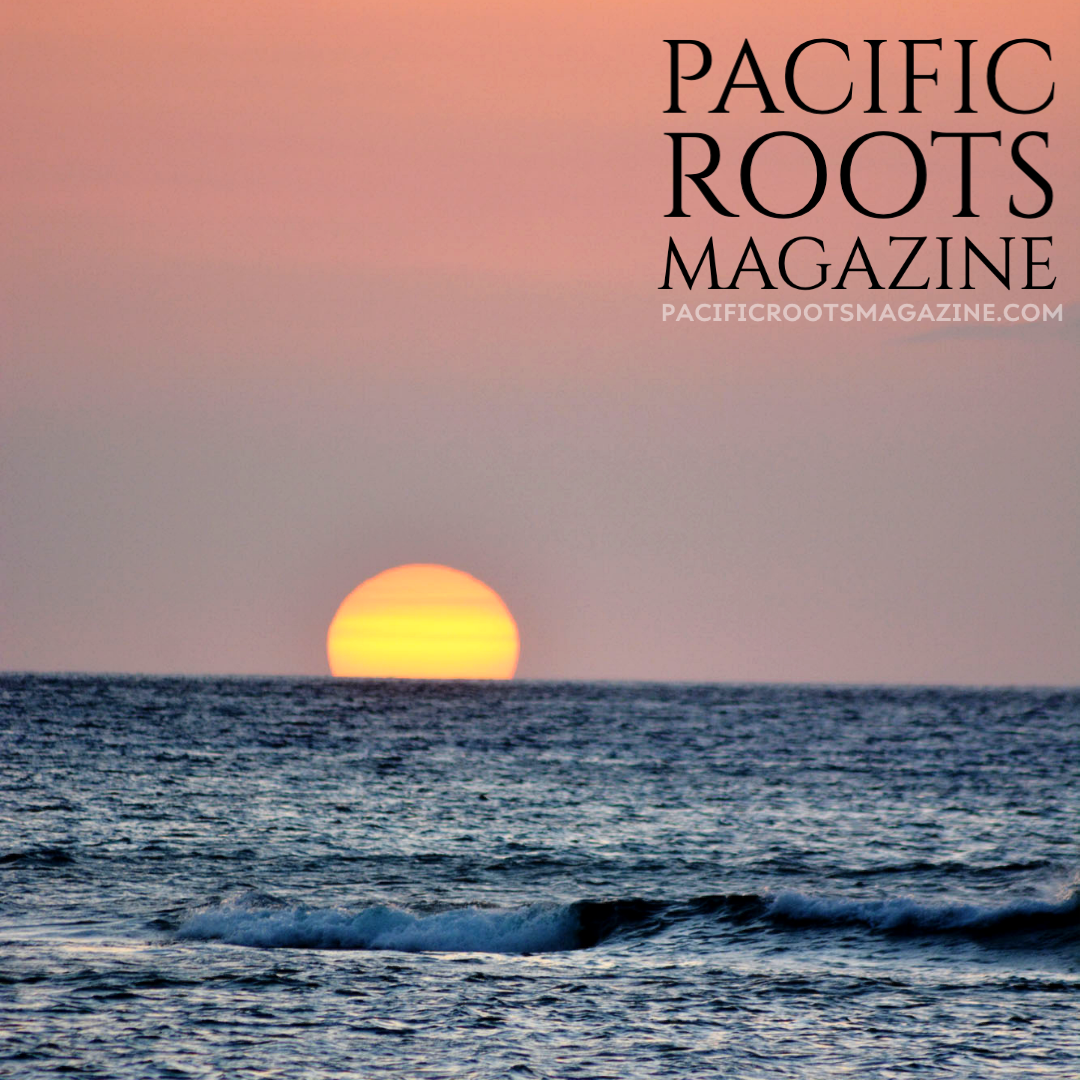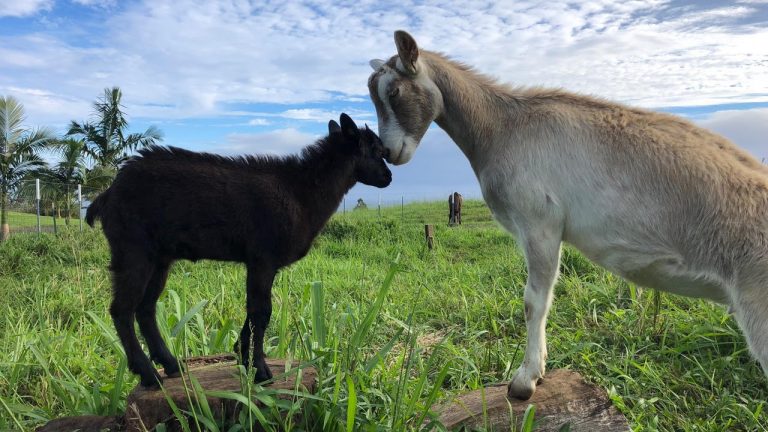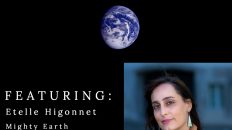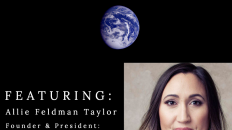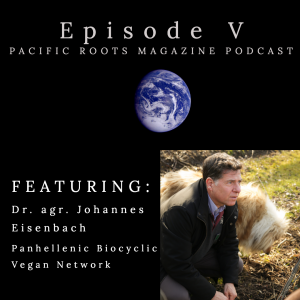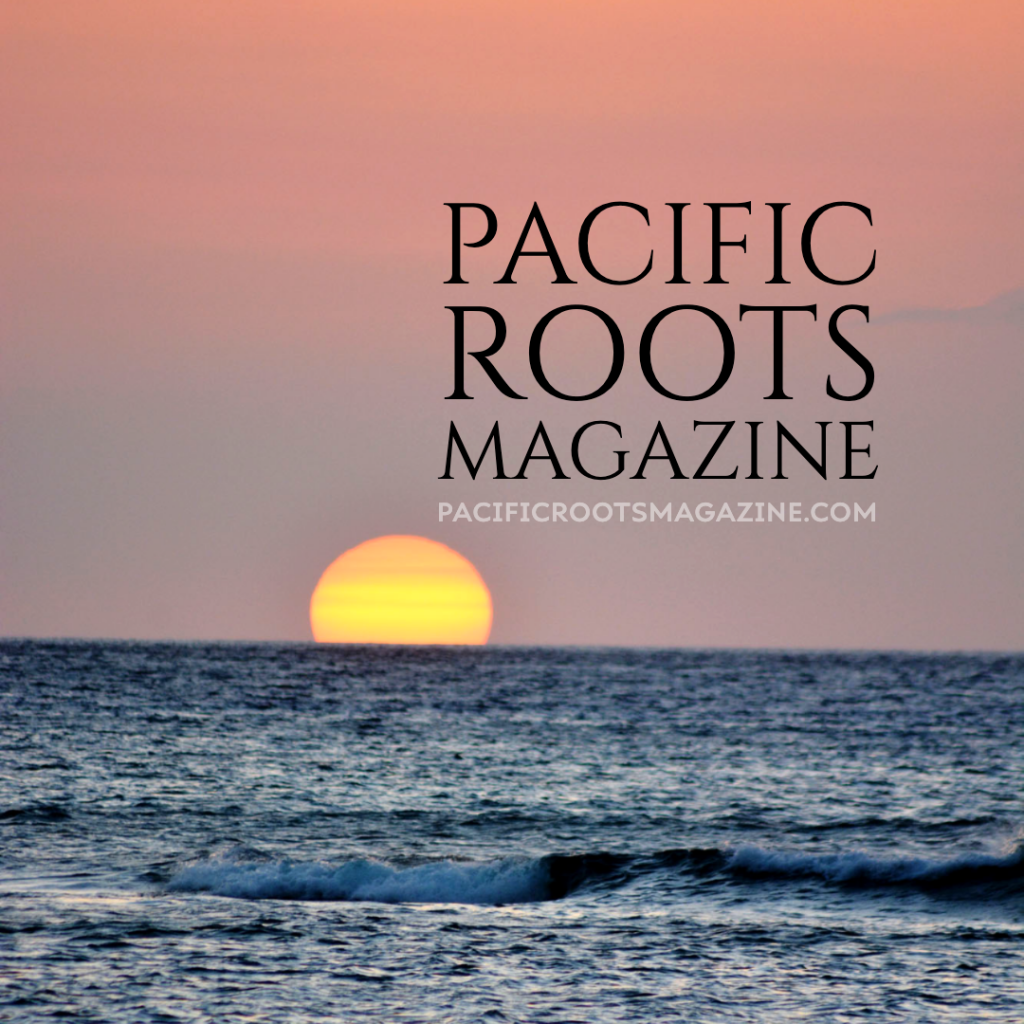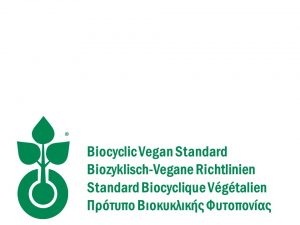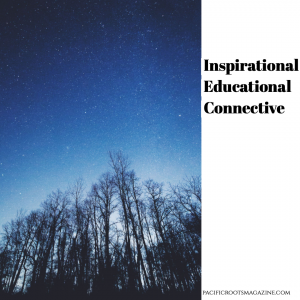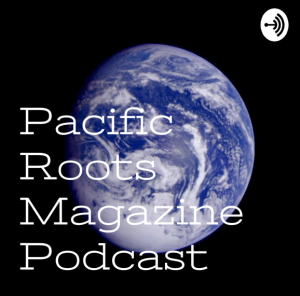“People are curious and ask questions, especially children, and it’s all about answering truthfully without passing judgment. The animals will do most of the work without doing anything at all, I just share their stories.” -Helena, Magical Creatures of Hamakua
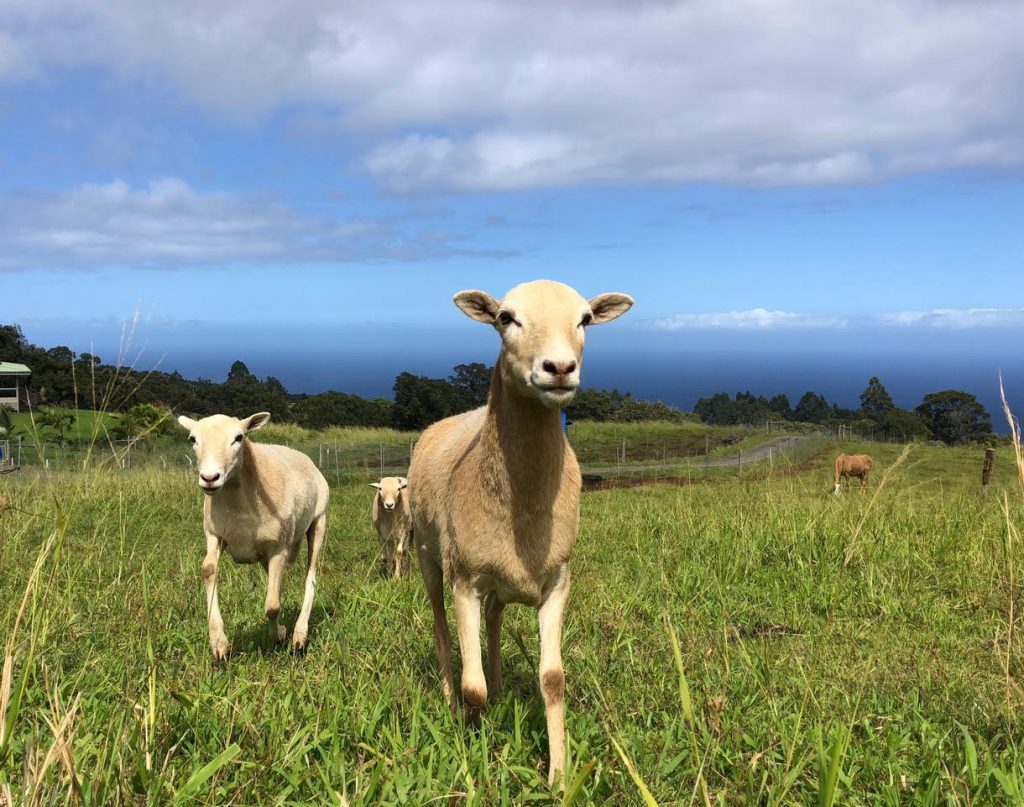
Photo: Magical Creatures of Hamakua
Coverage of animal sanctuaries worldwide is at the heart of Pacific Roots Magazine and so we were very excited to have the opportunity to talk with and feature Helena Lundblad of Magical Creatures of Hamakua on beautiful Hawai’i island. Born and raised in the northern part of Sweden, Helena has lived on islands most of her life, first in a town called Härnösand, later on a small island called Hemsön and now on Hawai’i (also known as ‘The Big Island’). She noted that “it’s something about being surrounded by water that makes me feel at peace”.
Interview with Helena Lundblad of Magical Creatures of Hamakua
When was Magical Creatures of Hamakua founded?
Helena: The sanctuary was founded in January, 2018. We had been living here for a year and a half at that point. I always had a deep love and empathy for animals, but I never had a dream or a plan of starting a sanctuary. I knew that I wanted to have animals around me, but we were probably thinking maybe two or three, not 54, but who’s counting? I guess sometimes you don’t realize what your life’s purpose is until you find yourself in the midst of it. There’s no doubt in my mind now that this is what I’m supposed to do.
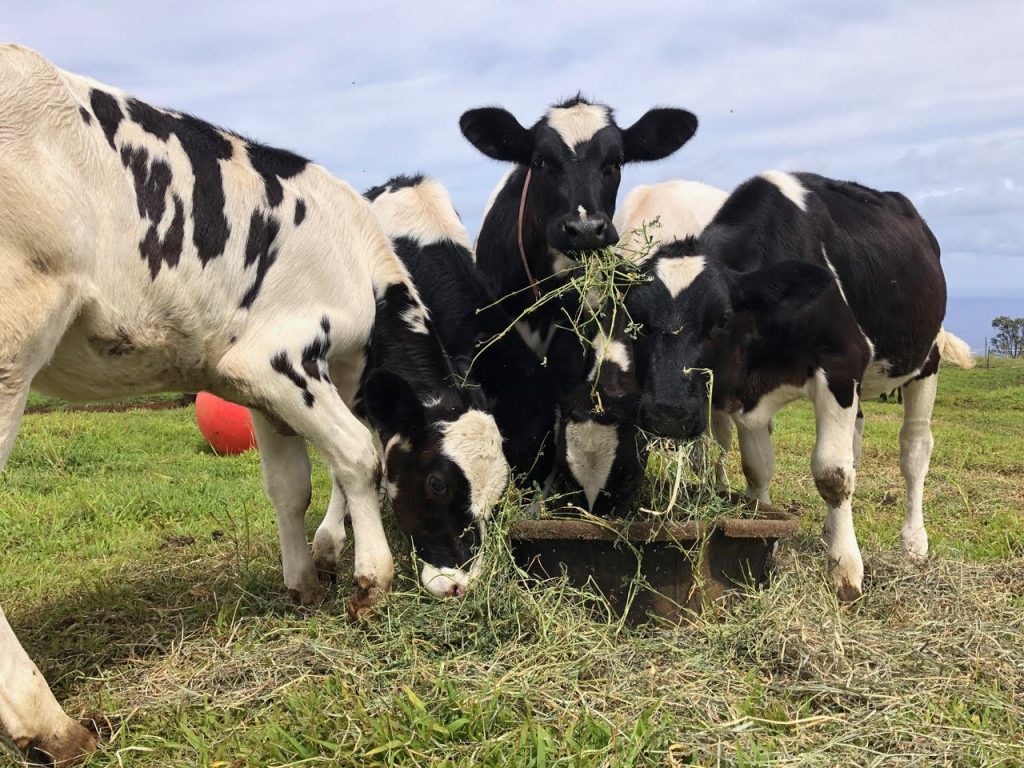
Photo: Magical Creatures of Hamakua
Why Hamakua specifically? What brought you to the Big Island and then specifically to Hamakua?
Helena: My husband, Mathias, works for Hawaiian Airlines and is based in Honolulu. We had been talking about relocating to Hawaii from San Diego for a while to shorten his commute, and both of us really liked the Big Island. The first time we drove up the coast of Hamakua I was just stunned by the beauty. This area is breathtaking! Since leaving Sweden I’d had a hard time feeling at home anywhere, but that changed the moment we moved here.
I really love how clear you are on the website that Magical Creatures of Hamakua is not a petting zoo nor exist for human need but is rather a haven for animals, many of whom have experienced incredible hardship prior to life at the sanctuary. Your words and this viewpoint so clearly presented must help to affect awareness of our (human’s) relationship and treatment to animals. Have you noticed that shift in some of your tours with the change of people’s perception?
Helena: Absolutely! Sometimes when I talk about farmed animals as individuals, with their own needs and desires, people probably think I’m a little bit silly at first. But during tours when I introduce animals one by one, people can see for themselves what I mean. I explain why we don’t approach some of them because of their shy personalities, while others can’t get enough of cuddles and human attention. I tell them about friendships between individuals, how some never leave each others sides and get anxious when separated.
I also encourage our guests to watch how the animals are communicating with each other, and how we can learn to understand their language. Just because other animals don’t speak in words, doesn’t mean that they don’t communicate. Most people know this of course, but probably not to what extent. We just need to take our time to listen to them. Just like with us humans, other animals have unique personalities. Some people are outgoing and energetic, other are laid back or shy, some are introverts and prefer solitude, some enjoy being the center of attention.
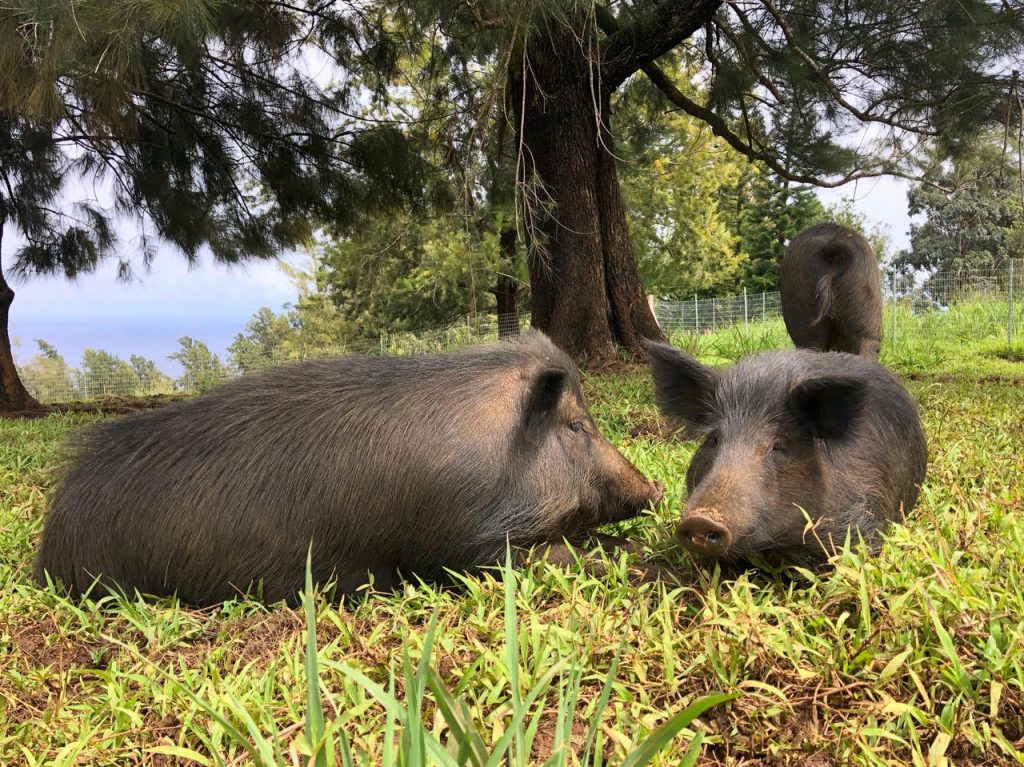
Photo: Magical Creatures of Hamakua
Helena: Visitors can see with their own eyes that what i’m talking about is true, and when they do they will also understand why we don’t force individuals into something they don’t want to do. Unless it’s for safety or medical reasons, if someone is clearly saying “No”, we should respect that.
I think wording is important, I have never really liked the English word “pets”. It implies that these animals are creatures we can touch as we please. What if they don’t want to be touched? I feel like the word “pets” belittles them in some way. It could be because English is my second language, it just doesn’t ring well in my ears. In Sweden the the word for “pets” translates to “house animals” [husdjur], which I like better, but I prefer to call them companion animals. It gives a better sense of equality between us as species. A more mutual relationship.
The story of the sanctuary’s beginnings is shared on your website. It really started off with just providing safe space and care to a few animals and then grew from there. When did you incorporate as a non-profit?
Helena: It actually all started with one very special goat named Janice.
Janice was badly injured when I got her as an orphan wild goat when she was only a couple of days old. We later came to the conclusion that she must have jumped through a camping fire, all her legs were burned and her hooves were damaged.
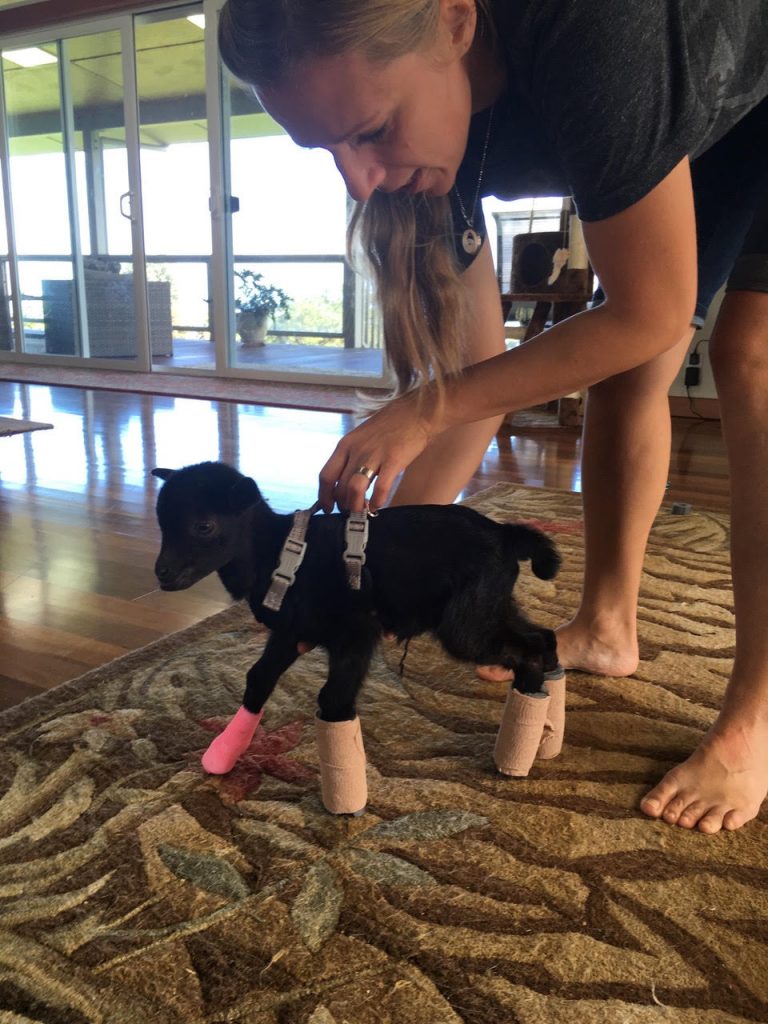
Photo: Magical Creatures of Hamakua
Due to Janice’s injuries she ended up staying inside the house for almost 6 months while she was healing and learning to walk again with prosthetic feet. During this time me and this little goat developed a very special friendship, and it was in this relationship I came to really realize how wrong it was to divide animals into categories like “pets”, “farm animals” and “livestock”. It was no doubt Janice was just as much family as the dog and the cats, there was really no difference between them. But still we heard comments about how wrong it was to keep “farm animals” inside the house. She wasn’t a farm animal for us, she was Janice and she needed some help.
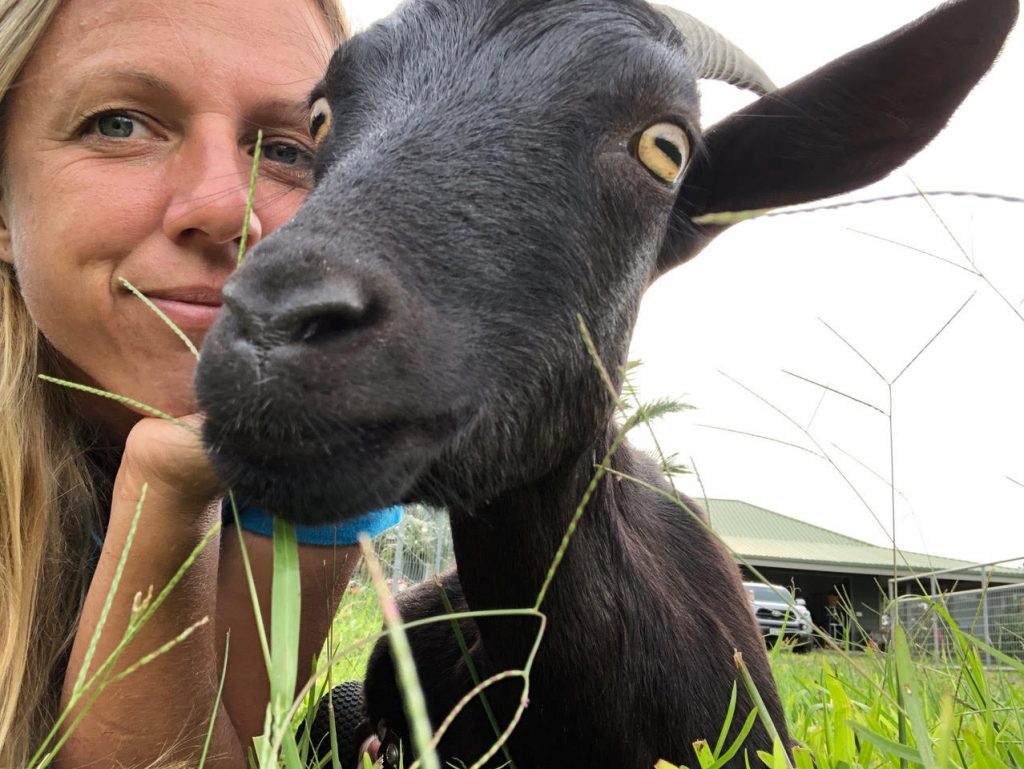
Helena notes that they …”still have a really close relationship, she’s my best friend, she knows all my secrets.”
Photo: Magical Creatures of Hamakua
I started playing with the idea of an animal sanctuary at end of 2017, but I didn’t really know how go about and do it. Then during the Circle V festival, Mathias and I started chatting with a girl named Jessica from Farm Animal Rights Movement (FARM). We told her about our little group of rescued animals, by that time we had three goats and a few horses, and a little group of chickens, and I asked her for advice on how to start a sanctuary. Jessica basically told me I already had one. I guess I had been waiting for someone to give me that seal of approval. I thought there were rules to follow and conditions for when you’re allowed to call it a sanctuary. But turns out there is no sanctuary police, anyone can call what they are doing a sanctuary. So I decided to incorporate and apply for 501c3 status. My plan was to stay small at first, and slowly grow as more people got involved and we had more funding.
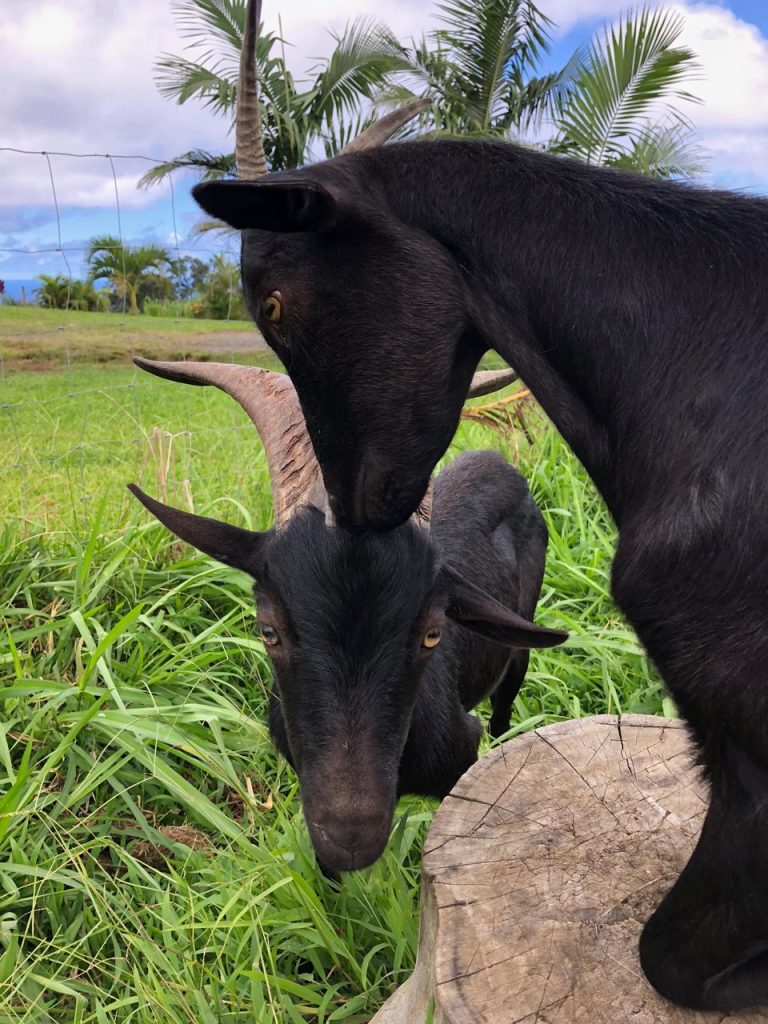
Photo: Magical Creatures of Hamakua
Were there any specific challenges to founding the sanctuary?
Helena: Not really actually, it was a little tricky finding the right information, and to know in which order things needed to be done. It was definitely trial and error, but no large mishaps. Overall the process was quite simple. I think the most difficult part in the beginning was to find people who shared my vision. I was still new to the island and didn’t know a lot of people out here, my best friends at the time had four legs, and apparently goats are not allowed to be on your board of directors.
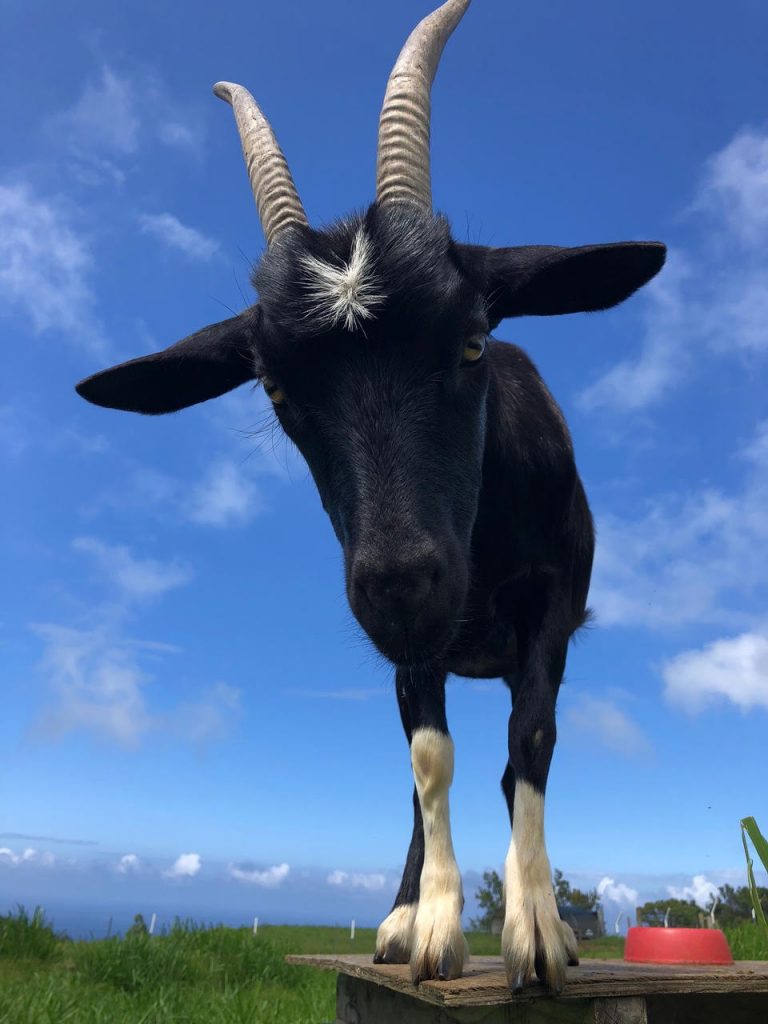
Photo: Magical Creatures of Hamakua
Can you share about some of the new intakes at the sanctuary during and since the 2018 volcano eruption in Puna?
Helena: When the volcano erupted last year, Magical Creatures was still a tiny, brand new sanctuary. Right when it all started we were a small group of people coming together to help coordinate animal rescue out of the evacuation zone, [Hawaii Lava Flow Animal Rescue Network on Facebook], and this is when I understood what an amazing animal rescue community we have out here. Besides our core group in HLFARN, large numbers of people were volunteering to hike in to trap and rescue animals from the lava flow zone, others housed temporary fosters, or helped transporting animals to safety. It was heartwarming to see this in a time of so much pain and suffering.
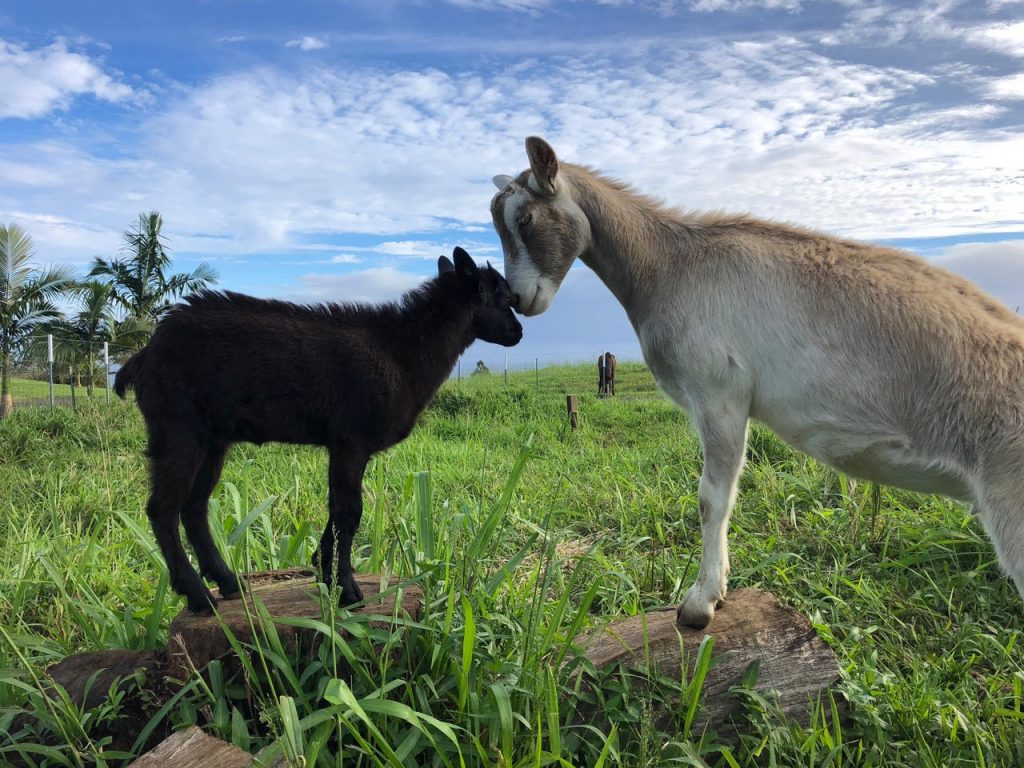
Photo: Magical Creatures of Hamakua
During the evacuations Magical Creatures took in a total of 21 farmed animals, all of which were left behind, and rescued by volunteers last minute. I heard some people saying that they left the pasture gates open, claiming animals would find their way to safety. But even with gates open, how is a goat or cow supposed to know how to escape burning lava? When frightened, many animals hide, or return to the place they normally feel safe, which is in their barn or pasture. The air down there was toxic to breath, and explosive fissures were opening up one by one shooting burning lava hundreds of feet up in the air. Many of the animals I took in were in poor condition. One young goat was hanging on to life by a thread. She had to be hospitalized and receive a blood transfusion before she could come back home 3 days later. They were all underweight and riddled by parasites.
No one knows for sure how many animals were killed by the lava flow, or from starvation and thirst after being trapped in small patches of untouched ground within the lava field. My heart breaks from thinking about them and I’m forever grateful for the ones we were able to save.

Photo: Magical Creatures of Hamakua
About how many volunteers do you have and what types of things do they do?
Helena: We have about 15 volunteers who come up to the sanctuary one day per week each (a couple of them even two days per week). A regular shift includes feeding all the residents, filling waters, cleaning shelters, and of course spending time with the animals. The work it elf can be done in about an hour, but I ask all volunteers to commit to at least two hours per week. I don’t want them to rush, and I encourage little breaks during the shift to sit down and interact with the animals who are interested in that.
I often hear volunteers talk about their experience as therapeutic, a way to unwind and get grounded. I personally can attest to this, spending time with animals will in a way force you to be in the moment. No matter what’s going on in your life, it doesn’t matter when Lily, the sheep, reaches up to sniff your face and wags her tail in enjoyment when you scratch her neck. Or when Bert, the pig, flops over to his side and ask you to rub his belly just a little while longer. Or when you watch the herd of cows chase each other around like big puppies. No therapy in the world beats it.

Photo: Magical Creatures of Hamakua
Besides the animal care volunteers we also have a handful of people helping in other areas, like picking up feed from the feed store, helping with social media and responding to emails, or helping during different projects at the sanctuary.
Since the end of last year we are also offering live-in volunteering. Live-in volunteers stay with us for up to a few months, and are helping with various tasks around the sanctuary. This option has been very popular so far and we already have live-in volunteers scheduled until March 2020.

Photo: Magical Creatures of Hamakua
The ‘A Summer Night’s Dream’ Fundraiser looks absolutely amazing! Can you share more about the planning and organization for this upcoming fundraiser?
Helena: We just had this event last week! It was a lot of fun, especially to get to meet some some of the people who I up until then only knew as names from different facebook groups. A fabulous vegetarian/vegan restaurant called Under the Bodhi Tree was hosting us and also donated all the food items! Too many amazing people helped out making this a reality for me to mention them all, but I’m so very grateful for all of them.
The event was the kick off for the barn project here at the sanctuary. With our 13 acres we have already pretty much reached our capacity for how many residents we can house. In order for Magical Creatures, as an organization, to be able to continue to help animals even after we reach our limit at the sanctuary, we need to evolve and develop new programs. So the next step will be to build barn. The sanctuary is right now run out of our home, we store feed and supplies in our small garden shed, where our special needs animals also sleep at night.
A barn would not only allow us to move feed and equipment into proper storage, it would also serve as emergency housing for our residents during storms, we would be able to house and treat sick or injured residents, it would allow us to take in emergency rescues, and properly quarantine new arrivals. The barn would also be the center for other kinds of activities. We want to do community events, offer educational seminars, do kids summer camps, and vegan potlucks etc.
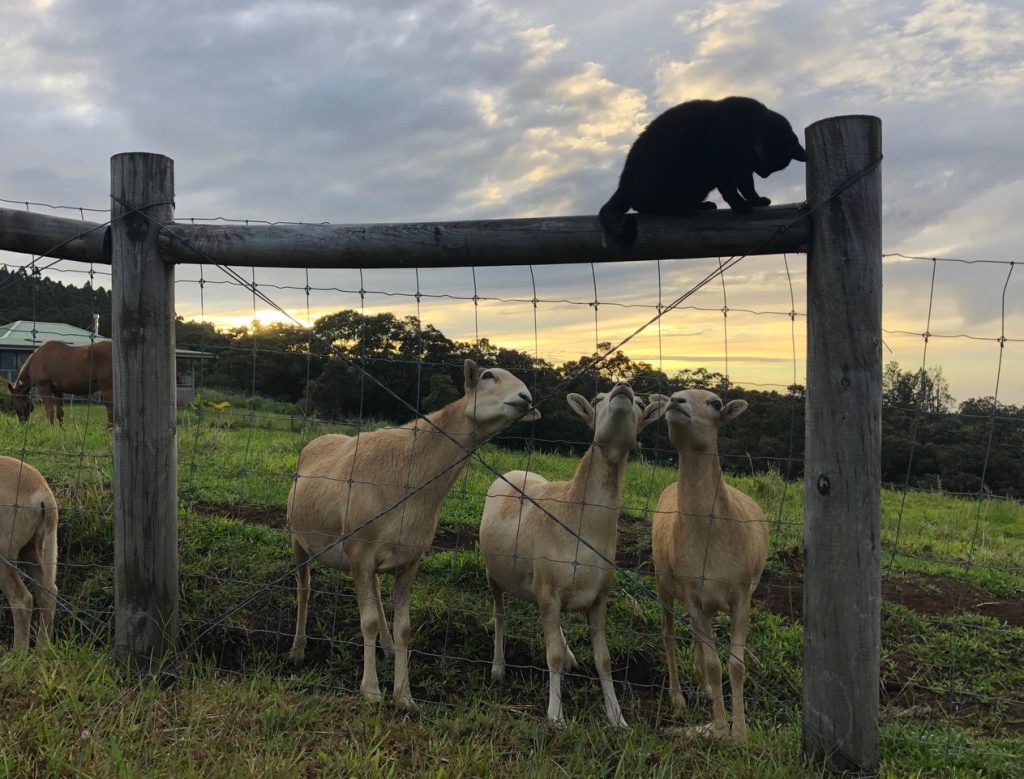
Photo: Magical Creatures of Hamakua
How does a vegan ethos tie into the sanctuary activities?
Helena: Running a sanctuary has given me the opportunity to talk about veganism without even mentioning the word “vegan”. All our activities are shaped with the animals’ best interest in mind, and we promote compassion and respect for all beings. I find that in conversation people will often come to their own conclusion, and I try to keep that door for conversation open also for people who are miles away from even considering moving toward veganism. We have a lot of ranchers and hunters out here, and many of them probably think I’m a little crazy. But that’s ok, they still bring their children to see the animals, and they leave the tour with a smile on their faces and the tiny seed of compassion that I sneak into their pockets.
People are curious and ask questions, especially children, and it’s all about answering truthfully without passing judgment. The animals will do most of the work without doing anything at all, I just share their stories.
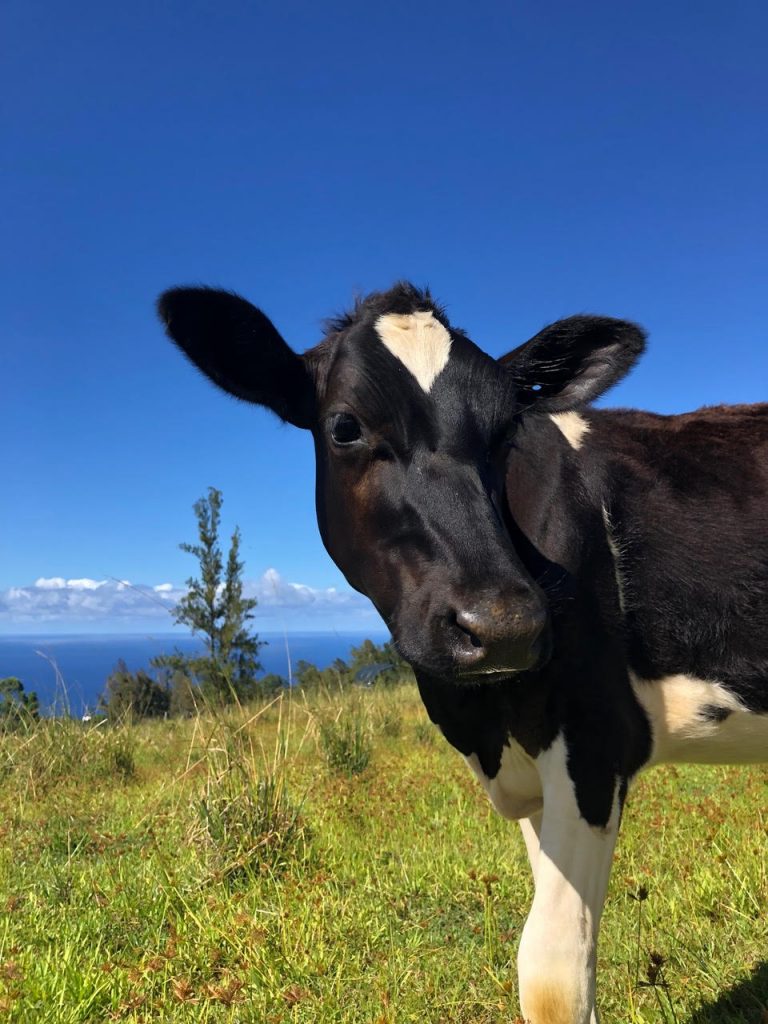
Photo: Magical Creatures of Hamakua
Visit Magical Creatures of Hamakua online at https://www.magicalcreaturesofhamakua.org/
Feature & Interview by Pacific Roots Magazine Editorial Desk
